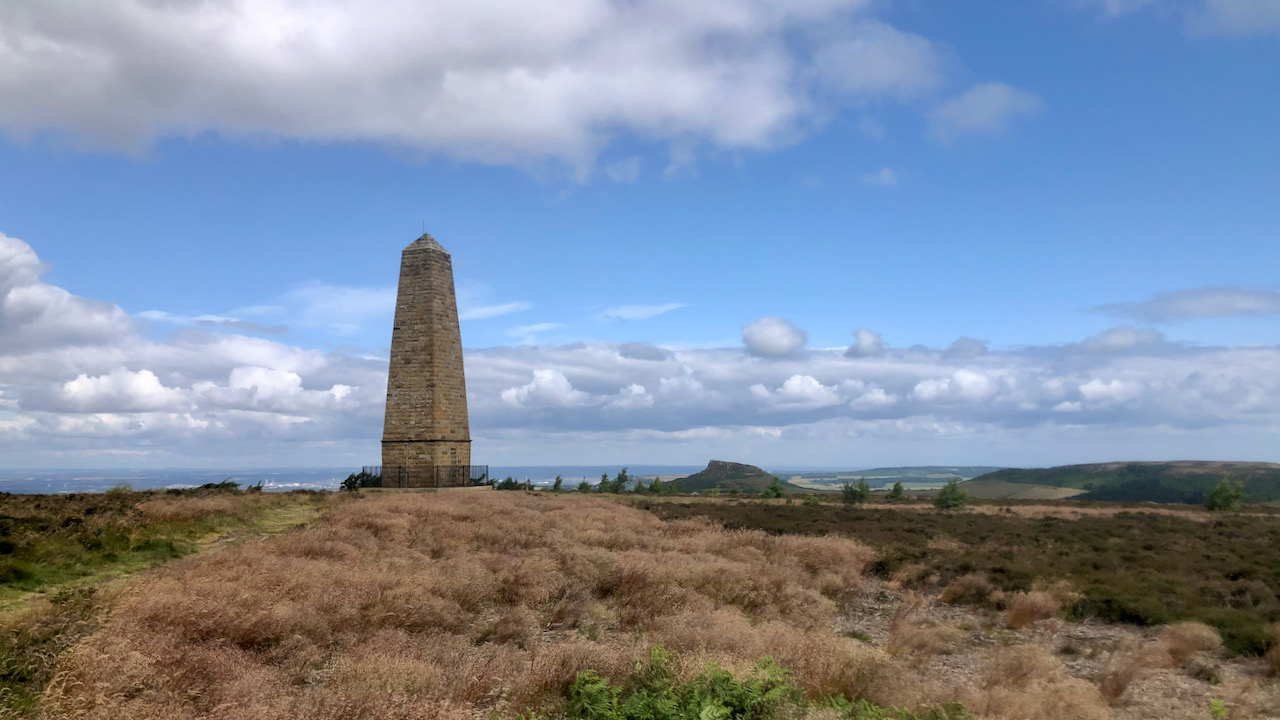Well, it’s been a quite a while since I last posted a photo of that obelisk known as Capt. Cook’s Monument, perched ever so ostentatiously upon Easby Moor. A tribute it is to that infamous chap, Captain James Cook, the problematic “discoverer” of Australia, who hailed from the local village of Great Ayton during his youth.
Now, this monumental structure boasts a rather grandiose inscription, etched upon a plaque of marble, or so I fancy. The words go like this:
In memory of the celebrated circumnavigator Captain James Cook F.R.S. A man of nautical knowledge inferior to none, in zeal prudence and energy, superior to most. Regardless of danger he opened an intercourse with the Friendly Isles and other parts of the Southern Hemisphere. He was born at Marton Oct. 27th 1728 and massacred at Owythee Feb. 14th 1779 to the inexpressible grief of his countrymen. While the art of navigation shall be cultivated among men, whilst the spirit of enterprise, commerce and philanthropy shall animate the sons of Britain, while it shall be deemed the honour of a Christian Nation to spread civilisation and the blessings of the Christian faith among pagan and savage tribes, so long will the name of Captain Cook stand out amongst the most celebrated and most admired benefactors of the human race.
Now, I must confess, I find these words discomforting and embarrassing, and I suppose some members of today’s society would find them deeply offensive. However, they do shed a spotlight on the peculiar attitudes of yesteryear, particularly during the reign of the Victorians when these words were penned.
This grandiose monument was built in the year 1827, and soon became a visitor attraction. Among the throngs of eager visitors was one William Stott Banks, a man of Victorian gentility. In 1866, he published his guidebook of “Walks in Yorkshire,” wherein he stated that the inscription was on “three iron plates“. This suggests that Banks could have been referring to the original inscription on the monument, envisaged by Robert Campion who raised it, which read thus1“Captain Cook’s Monument.” Yorkshire Gazette, 28 July 1827, p. 2. British Library Newspapers, link-gale- com.ezproxy.is.ed.ac.uk/apps/doc/JE3239473624/GDCS?u=ed_itw&sid=GDCS&xid=4dd0e1f6. Accessed 21 Apr. 2021.:
The foundation stone of this monument was laid by Robt. Campion, Esq, of Whitby, Lord of the Manor of Easby, on the 12th day of July, 1827, being his birthday, In commemoration of that celebrated circumnavigator Capt. James Cook, who was born at Marton, in this neighbourhood, Oct 27th, 1728, and who served his apprenticeship to sea from Whitby.
The new inscription was certainly quoted in a 1881 newspaper article2Local Records and Notes. | Newcastle Courant | Friday 07 October 1881 | British Newspaper Archive. URL: https://www.britishnewspaperarchive.co.uk/viewer/bl/0000085/18811007/034/0006.
In the year 1895, extensive renovations were carried out on the monument, during which the door was blocked up. A bolt of lightning struck the monument in 1960, leaving the monument shattered, and which took three months ensued to repair. To avoid a repeat, a lightning conductor was installed.
- 1“Captain Cook’s Monument.” Yorkshire Gazette, 28 July 1827, p. 2. British Library Newspapers, link-gale- com.ezproxy.is.ed.ac.uk/apps/doc/JE3239473624/GDCS?u=ed_itw&sid=GDCS&xid=4dd0e1f6. Accessed 21 Apr. 2021.
- 2Local Records and Notes. | Newcastle Courant | Friday 07 October 1881 | British Newspaper Archive. URL: https://www.britishnewspaperarchive.co.uk/viewer/bl/0000085/18811007/034/0006

Leave a Reply